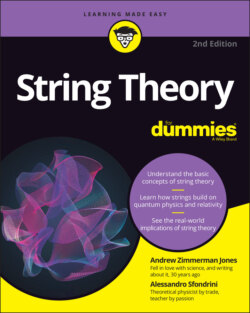Читать книгу String Theory For Dummies - Andrew Zimmerman Jones - Страница 85
A matter of inertia, and a matter of the utmost gravity
ОглавлениеWhen we think of any type of matter, a couple of unrelated images come up. First, we cannot go “through” matter: We cannot move through walls, and even wading in water, we encounter resistance. Second, all matter falls down, thanks to gravity.
Newton’s key insight was to understand that these are truly fundamental properties of all matter. The first property can be summarized by saying that all matter resists any attempt to put it into motion (we explain this in more detail later in this chapter in “Force, mass, and acceleration: Putting objects into motion”). This is called inertia, and the degree to which an object resists this change is its inertial mass.
The second property is that all matter is subject to the force of gravity. In fact, in Newton’s law of universal gravitation, the mass of an object plays the role of the charge of the gravitational attraction, just like the electric charge does for the electric force. Not that Newton could have known this: The electric force was discovered by Charles-Augustin de Coulomb a century after Newton. To emphasize that the mass is the source of the gravitational attraction, we talk of gravitational mass.
If you think that using two different words — inertial and gravitational — to refer to mass is a little odd, you are spot on: It turns out that the two concepts of mass are one and the same! This is absolutely not obvious at first look. It wasn’t until the early 1900s that a Hungarian gentleman named Loránd Eötvös came up with a clever experiment that convinced people that this was the right way to think about Newton’s discovery. This fact is a crucial ingredient in Einstein’s general relativity theory and in string theory.
